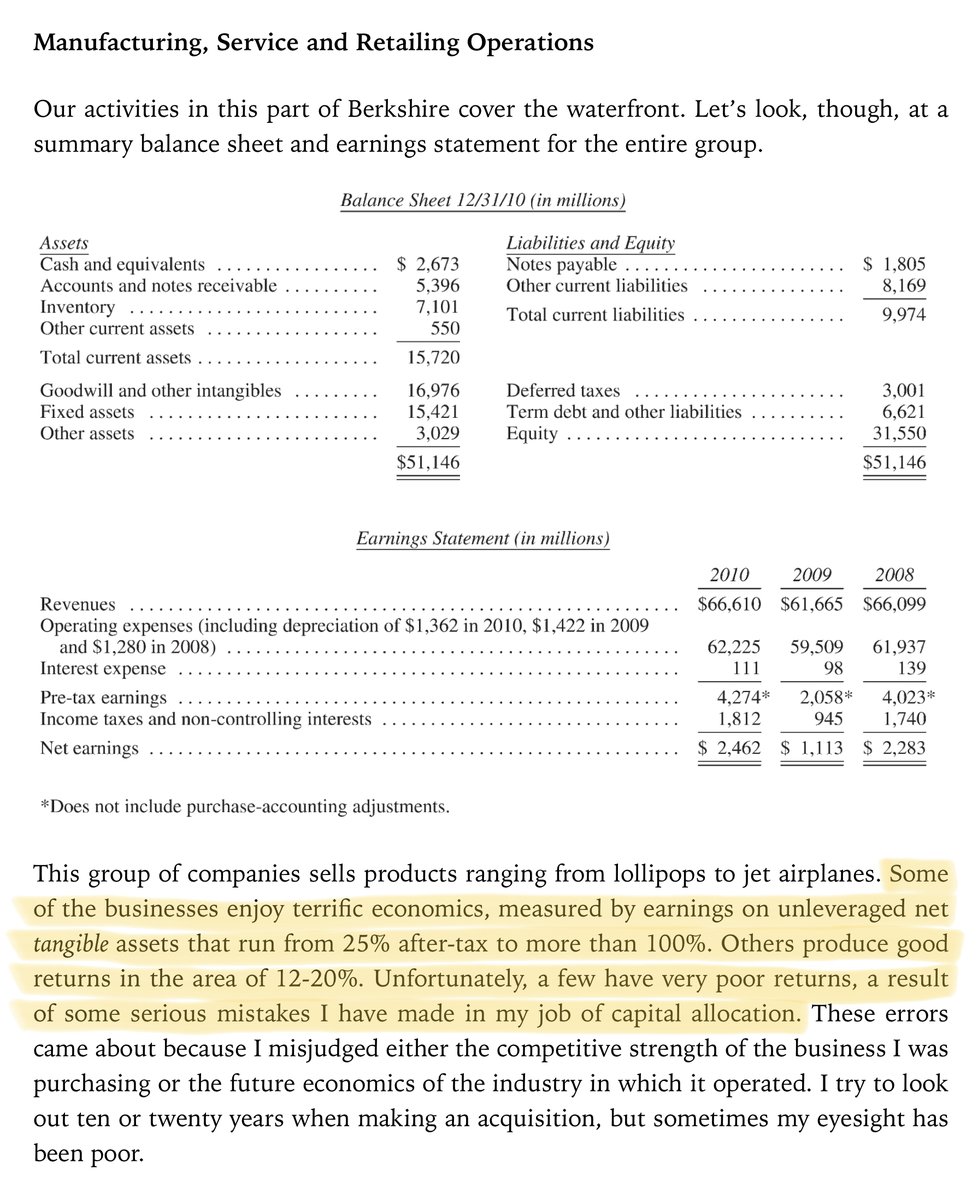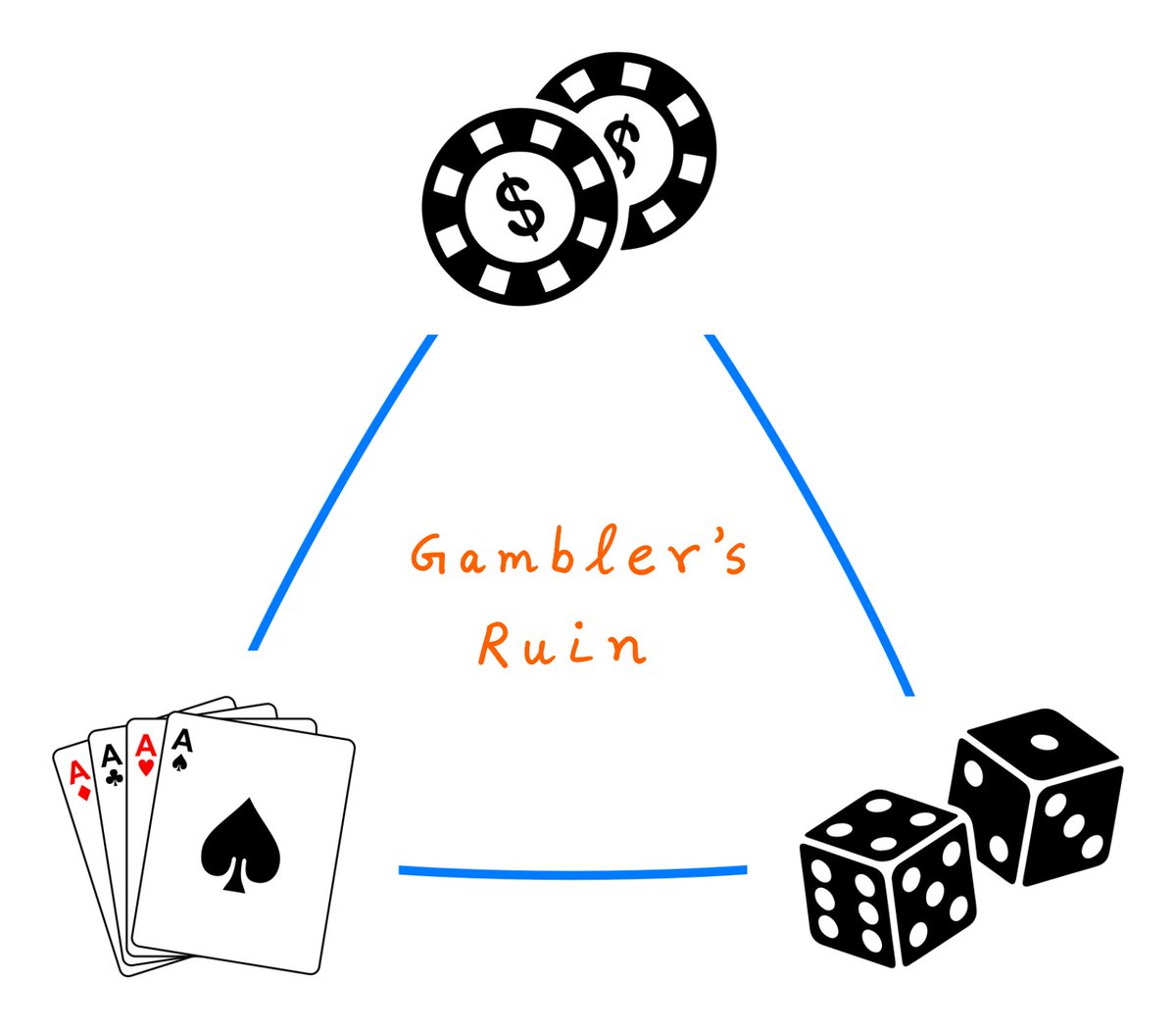1/
Here's the thing about Return On Equity (ROE).
Imagine we have a business with $1B in assets, that earns $200M each year on these assets.
The business is stable and has durable competitive advantages. So, it can sustain these earnings year after year.
Here's the thing about Return On Equity (ROE).
Imagine we have a business with $1B in assets, that earns $200M each year on these assets.
The business is stable and has durable competitive advantages. So, it can sustain these earnings year after year.
2/
Let's say the business has $800M in debt (on which it pays 5% interest) -- and no other liabilities.
So, after paying 5% of $800M = $40M in interest, the business will post $160M in earnings on $200M in equity, for an 80% ROE.
Let's say the business has $800M in debt (on which it pays 5% interest) -- and no other liabilities.
So, after paying 5% of $800M = $40M in interest, the business will post $160M in earnings on $200M in equity, for an 80% ROE.

3/
Suppose the business now uses its earnings to pay down part of its debt.
This leaves it with the same $1B in assets, but only $800M - $160M = $640M in debt.
Equity therefore goes up from $200M to $1B - $640M = $360M.
Suppose the business now uses its earnings to pay down part of its debt.
This leaves it with the same $1B in assets, but only $800M - $160M = $640M in debt.
Equity therefore goes up from $200M to $1B - $640M = $360M.
4/
What happens to ROE in Year 2?
It turns out: ROE will drop precipitously -- from 80% to just ~46.67%.
That's despite the fundamental earning power of the business not having changed at all! (The business still earns the same $200M pre-interest on $1B of assets.)
What happens to ROE in Year 2?
It turns out: ROE will drop precipitously -- from 80% to just ~46.67%.
That's despite the fundamental earning power of the business not having changed at all! (The business still earns the same $200M pre-interest on $1B of assets.)

5/
And if the business keeps this up (earning the same $200M pre-interest, and paying down debt each year), ROE will keep dropping year after year.
And if the business keeps this up (earning the same $200M pre-interest, and paying down debt each year), ROE will keep dropping year after year.

6/
To those who use ROE as an indicator of business quality, it may *look* like the business is steadily becoming worse.
But reality is very different. The business's earning power is in tact. And as debt is paid down, the business arguably becomes *less* risky, *less* fragile.
To those who use ROE as an indicator of business quality, it may *look* like the business is steadily becoming worse.
But reality is very different. The business's earning power is in tact. And as debt is paid down, the business arguably becomes *less* risky, *less* fragile.
7/
It's just that the capital structure of the business is shifting.
The equity/debt mix is tilting more towards equity than debt.
But that causes ROE to drop.
It's just that the capital structure of the business is shifting.
The equity/debt mix is tilting more towards equity than debt.
But that causes ROE to drop.
8/
If management wants to increase ROE, they can do the hard things: improve operating margins, increase returns on invested capital, etc.
Or they can do the easy thing and simply saddle the business with ever-increasing levels of debt.
If management wants to increase ROE, they can do the hard things: improve operating margins, increase returns on invested capital, etc.
Or they can do the easy thing and simply saddle the business with ever-increasing levels of debt.
9/
That's why Buffett likes to focus on the return a business earns on *unleveraged* net tangible assets.
This is much harder to "game" by simply playing around with the debt/equity capital mix.
That's why Buffett likes to focus on the return a business earns on *unleveraged* net tangible assets.
This is much harder to "game" by simply playing around with the debt/equity capital mix.

10/
So, the bottom line is: when studying changes in a company's ROE over time, it's important to understand *how* those changes were brought about.
Were they the result of genuine operating improvements, or simply the after effects of issuing imprudent amounts of debt?
/End
So, the bottom line is: when studying changes in a company's ROE over time, it's important to understand *how* those changes were brought about.
Were they the result of genuine operating improvements, or simply the after effects of issuing imprudent amounts of debt?
/End
• • •
Missing some Tweet in this thread? You can try to
force a refresh











